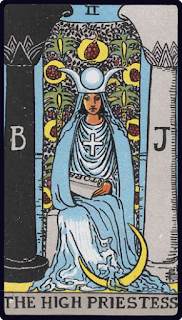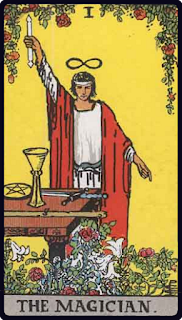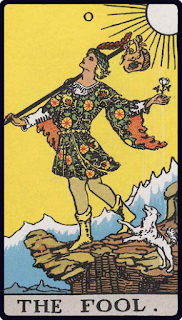
The High Priestess was traditionally known as the Popess, or La Papesse, later renamed the High Priestess by A. E. Waite when producing the Rider-Waite Deck. This change in name was intended to divorce the imagery of the Rider-Waite Deck from the authority and symbolism of the Church. As with the Pope which was renamed the Hierophant, this attempt to divorce the imagery of the cards largely fails.
The High Priestess and the Hierophant serve as the respective feminine and masculine polarities of the authoritarian nature of Spiritual discipline. The role of the High Priestess in particular serves as guardian of occult knowledge, she is a keeper of wisdom, the combination of knowledge and experience, this wisdom is such that the Fool is not yet ready to receive because they lack the experience necessary to understand and accept the knowledge she would impart. Nevertheless, the High Priestess shares this knowledge openly with those who ask it of her, and demonstrate their curiosity, even if that dispensation falls on deaf ears.
The High Priestess therefore represents wisdom, responsibility, and insight, and can be thought of as a source of strength and counsel who reserves judgement but instead attempts to nurture curiosity, not out of fear that her authority will be questioned but that greater understanding will lead to deeper faith..



